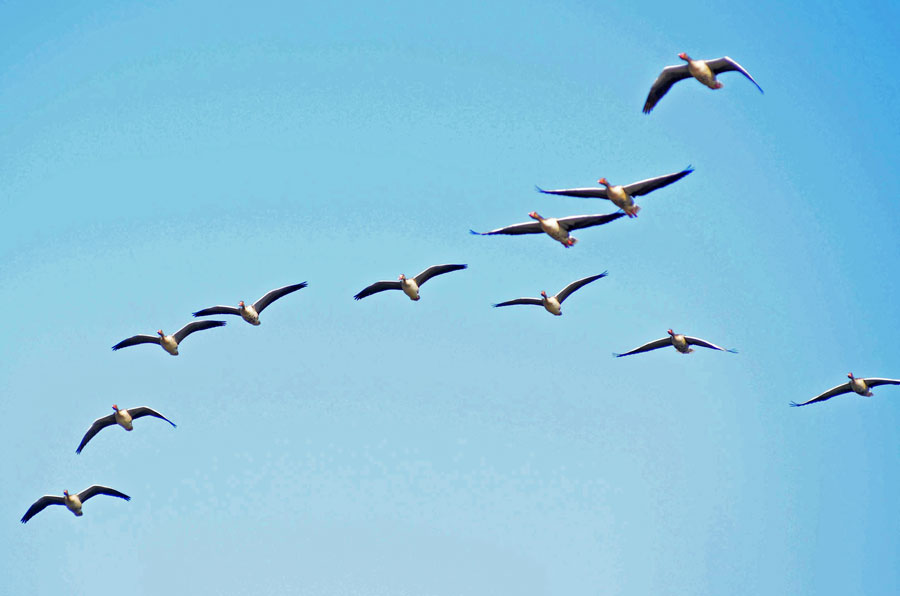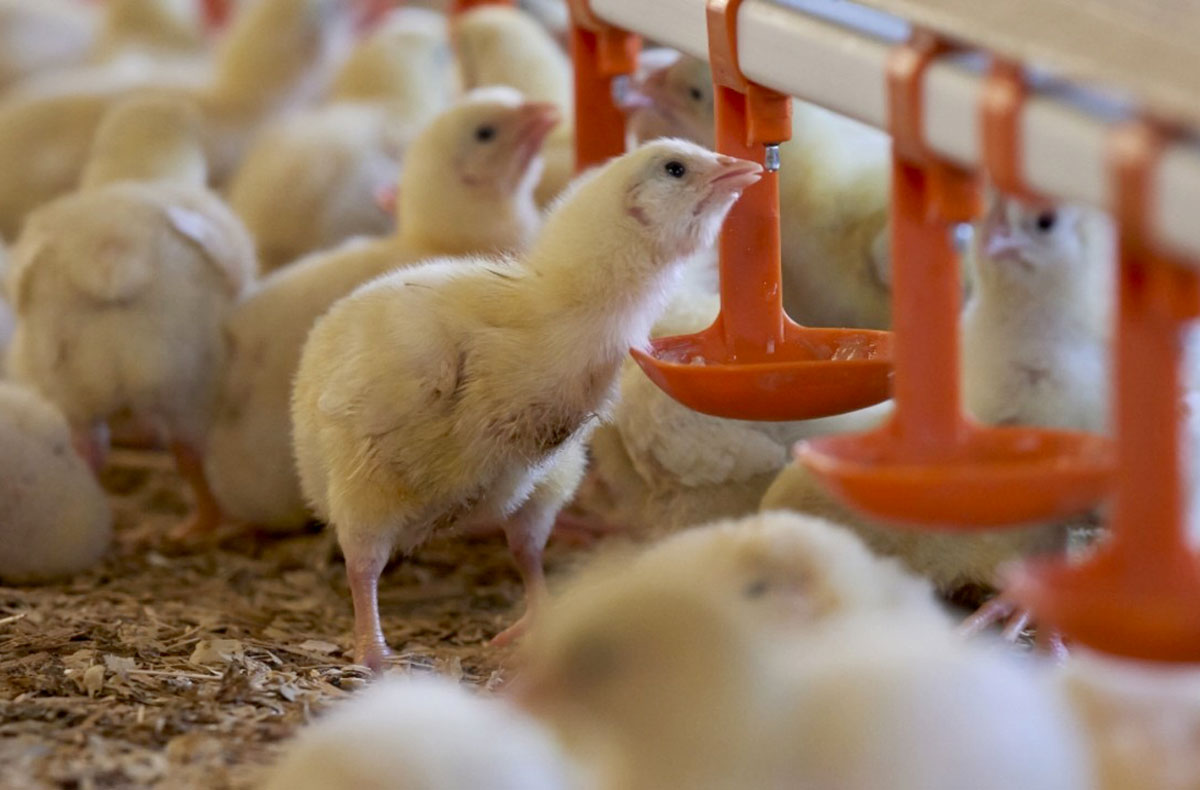With people desperate for a vaccine to manage the Covid-19, a pandemic that has killed two million people worldwide, the new bird flu has started triggering a new crisis as it impacts the migratory birds and the poultry, reports Khalid Bashir Gura

At a time when Coronavirus killed two million people across the world, a new virus is raging, this time in birds. It has caused deaths of thousands of wild and poultry birds in India. Following the outbreak, officials of Animal husbandry and Wildlife Protection in Jammu and Kashmir are on tiptoes.
This avian influenza (bird flu) is attributed to H5N1 virus has been found in migratory and poultry birds.

Jammu and Kashmir is highly vulnerable to bird flu as lakhs of migratory birds from faraway places migrate to its wetlands in winters through Central Asian Flyway (CAF). As the virus from the cross-border migratory birds spread to the domestic ones and eventually to the poultry, Jammu and Kashmir being one of the highest consumers of poultry imported from the affected states like Punjab and Haryana banned the import. They say it is just a precautionary measure.
World Health Organization (WHO) said more than half of the world’s bird flu incidents take place in the Central Asian Flyway (CAF) covering almost the entire Indian subcontinent. Close to 90 per cent of birds, migrating through the flyway, visit India’s wintering sites and some of them may be carriers of various avian diseases. The bird flu spreads through their droppings, contaminating the water bodies and places they visit. This leaves no room for Jammu and Kashmir’s Animal Husbandry and Wild Life protection departments for working independently of each other.
Poultry Problems
As the flu news spread, Umair Ahmed, a Kashmir poultry farmer had apprehensions regarding his farm. Even though no case of the flu was detected in Kashmir, it has impacted the people dealing with poultry. According to Ahmed, the bird flu threat is hitting the poultry market as prices of chicken and eggs have dropped drastically. The consumption has gone down.

“Today the prices have gone down to Rs 80 from 128,” he said. A few days ago he lost almost 3000 chickens on his farm to a disease. When he consulted the veterinarian, he was told that it is Infectious Bursal Disease (IBD) disease and not the present bird flu; much to his and doctor’s relief.
According to Ghulam Mohammad Bhat, President, Kashmir Valley Poultry Farmers Association (KVPFA), the virus fear has impacted the poultry market.
“The doctors and officials have reiterated that there is no need to panic and that the poultry is safe for consumption,” he said adding that though there has not been a single case of bird flu in Kashmir, the farmers are reporting a slump in business.
Due to the harsh winters, almost 40 per cent of Kashmir’s poultry farms remain closed.“Kashmir bred chicken is completely safe and we have appealed to the government to clear the misconceptions and misinformation among people which will help revive the market,” he said.
Officials Speak
Dr Purnima Mittal, Director, Animal Husbandry Department said that even though they have banned imports of all poultry products, there is no ban on the poultry being reared in Jammu and Kashmir. “There have been reports of mortality of birds from places like Ganderbal and Pulwama district and we have taken samples but there is no confirmation of flu yet,” Mittal said.
So far, Mital said, around 50 samples were taken to test at Bhopal Laboratory. “If there is any mortality or outbreak in any farm, as per guidelines, all the birds will be culled. After the culling it will be ensured, that the proper disposal of the carcass will be done to contain the contagion,” she said.
The department is ready to tackle the outbreak with 83 Rapid Response Teams in ten Kashmir districts. “If there is any unusual mortality of birds anywhere, the people should inform the department. The incubation period of the virus is less, highly contagious with a high rate of mortality,” she said. The culling, if required, will be compensated.

Mushtaq Ahmad Shah, Joint Director, Poultry said a robust mechanism is in place. The mortalities in poultry continue even before the detection of avian influenza. “If we feel there is an unusual mortality in poultry, the sampling is done and is sent to a research institute at Zakura and for further testing to Amritsar,” Shah said. “The ban on poultry import is in place and is a pre-emptive step in tacking it”.
Shah said people can consume the locally bred poultry as per the guidelines and procedures. He said thousands of families are dependent on Rs1600 crores industry.“Kashmir consumes 800 thousand kilograms a year and only one-fifth of this is imported,” Shah said.
Wildlife Tensions
NadeemQadri, Executive Director, Wildlife Conservation Fund (WCF) said they received reports of deaths of 150 crows in Udhampur. In Uri, near the Line of Control (LoC) several crows and eagles were found dead under mysterious circumstances, triggering panic among the locals.

Jammu’s Animal Husbandry Department ascertained that the birds that died last week in Udhampur and Kathua didn’t die of bird flu. “The food scarcity due to dipping temperatures and the snowfall may have been the cause of deaths,” he said.
Offering details of the crisis, Qadri said it all started when thousands of migratory birds, mostly bar-headed geese, died mysteriously in Himachal Pradesh’s Pong Dam Lake. Owing to frost in wetlands, the migratory birds have started leaving Kashmir.,“Migratory birds have started to fly to plains and other places with less harsh temperatures like Punjab, Uttar Pradesh and other places in India,” Qadiri said, adding he is apprehensive about reverse migration route that the birds will take.“Kashmir will be exposed to the virus when the migratory birds return from plains as the harsh winters subside. They may be carriers of avian influenza.”
Wildlife veterinarian Dr Umar Nazir said, they are on high alert. “Our teams monitoring the wetlands have been asked to report any unusual death of a bird or symptomatic birds. The samples from bird droppings are collected and sent to laboratories. Recently we collected 21 samples from Hokarsar and 42 from Dal Lake to ascertain if there is the prevalence,” he said. “In case there is a positive case, the 10-kilometre zone will be declared as the red zone.
“The virus is already in migratory birds but the mutations in a virus makes it highly pathogenic. It is highly contagious,” he said.
Regional Wildlife Warden RaashidNaqash, said that the wildlife department is working in coordination with Animal husbandry department and monitoring the situation and assessing through daily reports.
“As there are lakhs of migratory birds in Kashmiris wetlands, the possibility of transmission is highly possible,” Naqash said. “In case of any eventuality, we according to set procedures are ensuring to minimize the transmission to poultry, animals and humans if the outbreak is reported”.
As the mercury dips below minus, Naqash said the wetlands and Dal Lake stand frozen, which results in less space to the birds for breeding and feeding. “We ensure the availability of pools and grains to the birds so that they can get a viable environment,” Naqash said.
Wildlife Warden (Wetlands), IfshanDewan said we have not found out any such case of bird death so far as is happening in India. “Around six to seven lakh birds are present in different wetlands of Kashmir. The wetlands teams have been alerted and are being monitored,” he said. “We have sent samples of bird droppings to laboratories outside the state”.
Hokersar Scene
A squad of experts from the Institute of Animal Health and Biological Products (IAH&BP), Zakura of Animal Husbandry Department, Kashmir in coordination with the Wildlife Protection Department, collected samples at the Hokersar site, for Avian Influenza detection and forwarded them to High-Security Animal Disease Lab, Bhopal and RDDL Jalandhar for further testing.
Almost 1.5 Lakh birds of different species are presently stationed at Hokersar for breeding as well as winter nesting and this year two new species of birds were found in Kashmir; Tundra swan and white-fronted goose.
“The migration of these borderless birds starts from ending September and ends in March,” Dewansaid adding the birds come from coldest parts like Siberia, Russia, and other Central Asian Countries.

According to a study conducted last year by the Wetlands Division Kashmir Annual Asian Waterfowl Census in which a total of 813043 numbers of birds belonging to 39 species were recorded in all the wetlands of Kashmir. Hokersar contributed 59 per cent of the total bird count followed by the Wular Lake with 14 per cent and Dal Lake 11.8 per cent.
Common Teal was the most abundant species (25 per cent) followed by northern pintail (19.8 per cent) and Eurasian coot with 18 per cent.
The seven bird species namely Common Teal, Northern Pintail, Eurasian Coot, Mallard, Shoveler, Gadwall, Eurasian Wigeon constituted 98.5 per cent of the total birds during the annual Asian Waterfowl Census from 20 wetlands.
Consume Poultry
Dr SuhailNaik, Doctors Association Kashmir President asked people to not panic and consume poultry as there is no problem in consuming it.
“However, people should ensure they boil and cook it properly,” he said. “The people associated with the trade of poultry should take necessary precautions like wearing PPE kits”.















